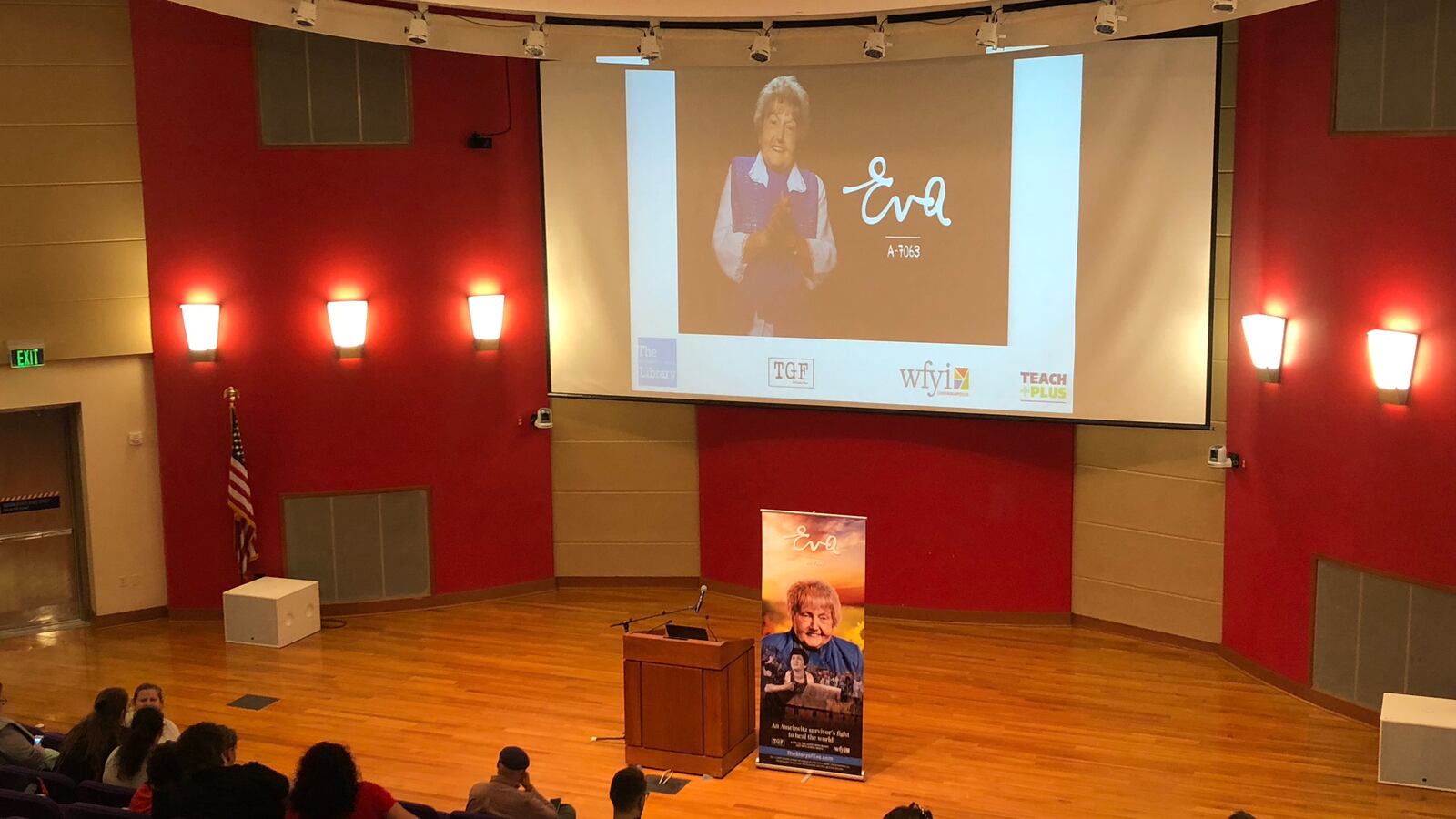As she watched a documentary retelling how Eva Kor survived Nazi experiments during the Holocaust, Melissa Humpfer was struck by how relatable the story was — to her personally, and potentially to her fifth-grade students.
Kor, a native Romanian who made her way to Terre Haute after being liberated from Auschwitz-Birkenau, endured medical experiments along with her twin sister at the hands of Josef Mengele, the infamous Nazi doctor who tortured hundreds of twins in the name of eugenics. When she came to America, Kor still felt intense anger about her past and was treated as an outcast.
That feeling of exclusion struck a chord with Humpfer.
“I am actually a mother of twins who’ve had a big struggle — they’re autistic” said Humpfer, a teacher at School 107, also known as Lew Wallace. “They have been (excluded) from a lot of community things. So with education, I see that there are a lot of kids like Eva … there’s a lot of kids out there who are like her and grew up with being an outcast of some kind.”
The “Story of Eva,” created by Ted Green, Mika Brown, and WFYI Public Media, was screened on Wednesday at the Indianapolis Central Library. After, Teach Plus, a teacher advocacy organization, put educators into groups to talk about how they could use Kor’s story in their classrooms. Kor has been making headlines for decades in Indiana and across the nation for her activism aimed at hunting down Mengele and, more recently, for eventually forgiving him.
The film highlighted themes of tolerance as well as dealing with anger and trauma — all issues the educators said were familiar to their students, even though the Holocaust ended more than 55 years before they were born.
“I kind of wish her message was antiquated,” said Andrew Pillow, an eighth-grade social studies teacher at KIPP Indy College Prep Middle charter school and former Teach Plus fellow. “I wish that I couldn’t find context to teach this today.”
For Humpfer’s students, many of whom are refugees who have fled their native countries, learning about a woman who was forcibly removed from her home and suffered severe hardship isn’t some far-off concept — it’s incredibly relatable. One student in particular, she said, has struggled to come to terms with coming to America. He’s resentful, angry, and stubborn. He refuses to learn English as a way to keep himself distant from a country that isn’t his.
“I see the anger she had, and it’s almost the same even though she went through so much with being tortured,” Humpfer said. “I see parallels with him, and I can’t wait to show him this, and I can’t wait to have that discussion.”
Schools, particularly those in poor urban communities, have long had to figure out how to address the trauma students might bring with them into the classroom. In Indiana this year, a bill was introduced in the General Assembly that would have had the state survey schools about how they address the social and emotional needs of their students, but the bill was not heard in committee.
Other state agencies have discussed and advocated for “trauma-informed teaching,” and local schools are pulling together community groups and businesses to support students, but the programs can be expensive and hard to coordinate.
For teachers in the classroom, a compelling, relatable story can be an easier way to help a student adjust. Humpfer said she especially liked that in the film, Kor explained that dealing with her anger wasn’t a fast process. It happened over time, but it was essential to improving her mental health.
And in a time when even young students might be dealing with the effects of racism, the importance of learning to be more tolerant can’t be overstated, Pillow said.
“It’s transformative to know that there are different groups of people who deal with the same things as your group is dealing with,” Pillow said. “Your group is not the only group that’s ever been discriminated against in the past, and probably won’t be in the future. I think that, in and of itself, is a powerful tool for acceptance.”
You can learn more about the documentary and educational resources that are available for teachers at the film’s website.

